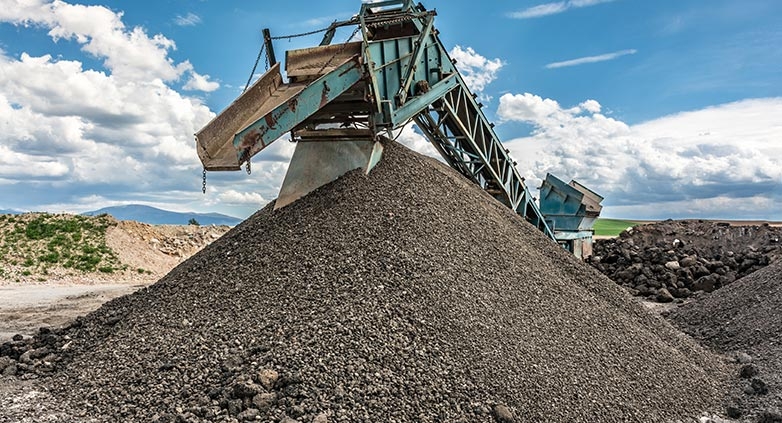Asphalt Recycling – Sustainable Pathways to Road Renewal
Asphalt recycling breathes new life into old roads, melding sustainability with efficiency. It’s a game-changer in modern road maintenance and construction.
Asphalt recycling involves reprocessing old asphalt into new paving material. This process includes milling or breaking up existing asphalt, combining it with additives, and rejuvenating it. Key benefits include reduced material waste, lower costs, and less environmental impact. It uses less new bitumen, relying instead on the recycled material’s existing binder, making it a greener choice for road construction.
Discover the intricacies of asphalt recycling, from innovative techniques to environmental benefits. This comprehensive guide illuminates the path to sustainable road construction.
How is Asphalt Made?
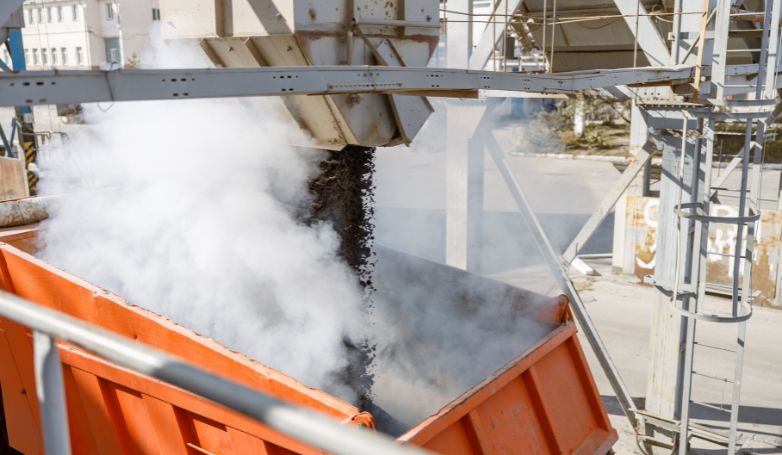
You will find asphalt just about everywhere you go on a daily basis. From roads and parking lots to playgrounds and sidewalks, it is the most common material in construction projects. In fact, even the coating on your roofs, carriages, and pipes is asphalt-based.
To explain it in simple words, asphalt binds the aggregate material, which consists of gravel and crushed stone, forming our hard surfaces. Technically speaking, the asphalt mixture falls into the category of bitumen-class hydrocarbons. It is typically found in dark brown or close to black color. Geologically, bitumen refers to naturally occurring deposits of petroleum, either in semi-solid or solid form.
Asphalt Manufacturing Steps
The process of asphalt manufacturing consists of several steps:
Distillation
Manufacturers heat crude oil rapidly for the initial distillation. After heating it, they transfer the crude oil to a distillation container from where they can extract the lighter-weight and volatile components. We call these fractions whose removal includes a series of cooling and condensing mechanisms. The distillation process leaves a heavy deposit we call “topped” crude that makes asphalt.
Cutting back
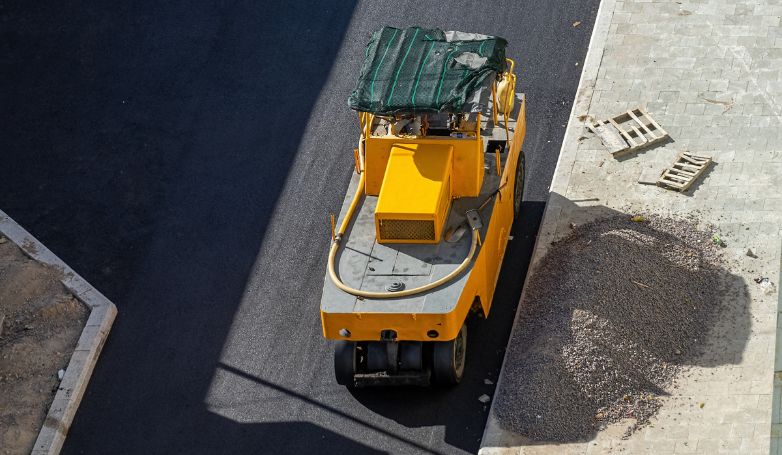
Manufacturers add a volatile substance like kerosene to asphalt, creating a softer, more pliable mixture at lower temperatures. This fluid material variant is especially useful in cold climates, preventing the rigidity that hampers standard asphalt application. This method ensures a smoother, more adaptable product, ideal for diverse construction scenarios, from residential driveways to large-scale road projects, providing flexibility and efficiency in varied temperature conditions.
Emulsifying
Emulsification creates an easier product to combine with aggregate. During emulsification, experts grind the asphalt into globules that must be smaller than five microns. After mixing it with water, they add the emulsifying agent to reduce asphalt and water’s potential to separate. Some of the most common emulsifying, asphalt-producing agents include vegetable oils, soap, silicates, and clay.
Pulverizing
In the pulverizing stage, manufacturers turn hardened asphalt into fine powder, then sieve it to achieve uniform granules, crucial for quality recycling. This step is vital in transforming discarded material into a resource for new paving materials, significantly reducing waste and promoting environmental sustainability. This process underlines the industry’s commitment to eco-friendly practices, ensuring old asphalt finds new life in roads and paths, contributing to a circular economy in construction materials.
How to Recycle Asphalt in 5 Steps
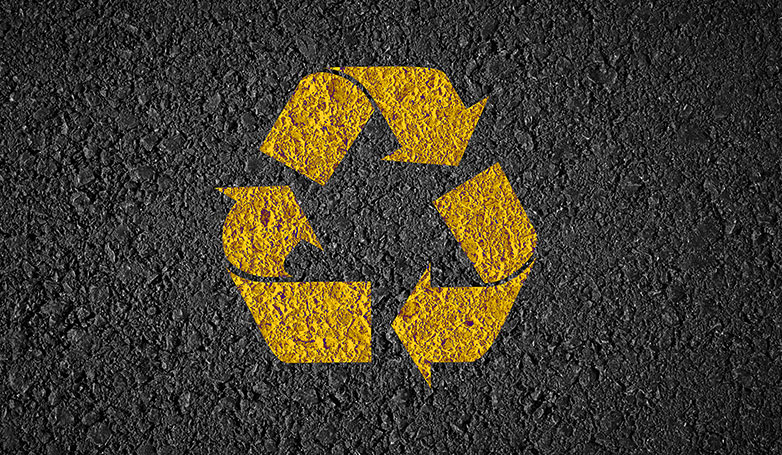
Recycling asphalt is like giving an old road a new lease on life. It’s a smart, eco-friendly approach that converts worn-out surfaces into a valuable asset for new construction. Let’s take a journey through the five essential steps that breathe new life into old asphalt, making it a sustainable and cost-effective choice for paving.
1. Milling
In milling, the top layer of asphalt is expertly removed, ensuring the sub-base remains undamaged. This process is crucial for salvaging high-quality asphalt material, vital for sustainable construction. Specialized machinery meticulously strips the asphalt, effectively preserving the sub-base while maximizing material recovery. This stage not only sets the foundation for efficient recycling but also underscores the commitment to sustainable construction practices.
2. Transportation and Screening
Once milled, the asphalt is transported to a recycling plant, where it’s rigorously screened and sized. This step is key to ensuring consistency in the recycled material, as uniform asphalt pieces are crucial for high-quality recycling. It involves careful sorting to remove impurities and achieve uniform granularity, setting the stage for the subsequent recycling steps and ensuring the end product meets stringent quality standards.
3. Diverse Recycling Methods
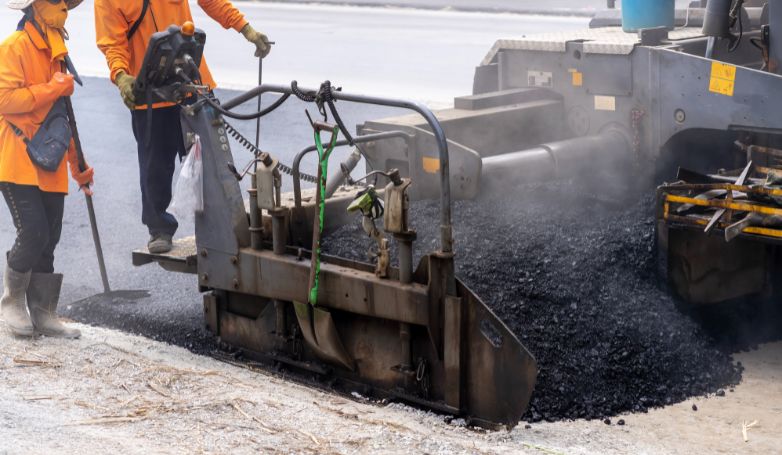
Asphalt recycling adapts to various needs and situations, offering multiple techniques to suit different paving projects. This flexibility ensures that recycled asphalt not only meets the specific requirements of each task but also enhances its overall utility and sustainability. Here are some of the key methods used in asphalt recycling, each tailored to address distinct requirements:
- Full-depth recycling: transforms completely worn-out pavements into reusable materials.
- Hot recycling: involves heating the asphalt mixture, enhancing its workability.
- Cold recycling: is an energy-efficient method that bypasses the heating process.
4. Mixing and Additive Integration
In this phase, asphalt millings are combined with additives and water in a reclaimer or recycler. This process is critical for integrating the old with the new, ensuring the recycled material retains essential binding properties. The careful selection of additives enhances the mixture’s quality, preparing it for new paving projects. This step exemplifies the innovative approach to recycling, turning old asphalt into a robust, functional paving material.
5. Ensuring Quality and Durability
The potential for asphalt to be recycled multiple times without quality compromise is a significant advantage. This aspect underscores its sustainability and cost-effectiveness, making it a favored choice for modern paving. Recycled asphalt maintains its durability, ensuring long-lasting pavements. This not only benefits the environment by reducing waste but also offers a reliable, long-term solution for infrastructure development.
Benefits of Recycling Asphalt
Asphalt recycling stands out as a beacon of sustainability and efficiency in the construction industry. It’s not just about reusing old material; it’s a commitment to preserving our planet and optimizing our resources. Let’s explore the significant benefits that come with recycling asphalt:
Conservation of natural resources
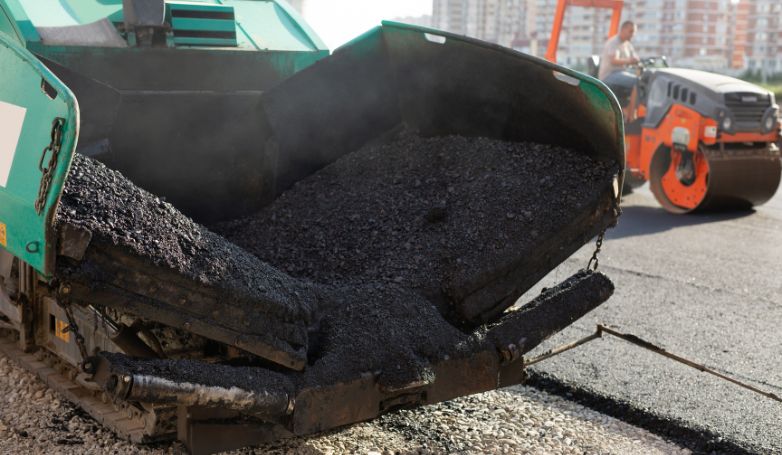
Embracing asphalt recycling is akin to giving Mother Nature a helping hand. By reusing existing materials, we drastically cut down on the need for new aggregates and bitumen, traditionally sourced from the earth through mining and quarrying. This conservation of natural resources helps maintain ecological balance and supports sustainable development, ensuring that our planet’s resources are available for future generations.
Reduction of landfill waste
The beauty of asphalt recycling lies in its ability to turn what would be waste into something valuable. Instead of old roads ending up in landfills, contributing to the growing waste management crisis, they get a second life. This significant reduction in landfill waste not only alleviates environmental stress but also symbolizes a step towards a more circular economy in construction.
Energy savings during production
Asphalt recycling is a testament to efficiency, consuming far less energy compared to producing new asphalt. This reduction in energy use leads to lower greenhouse gas emissions, making it a much greener choice. In a world where energy conservation is paramount, recycling asphalt showcases how sustainable practices can align with industry needs.
Cost-effective material for road construction

From a financial standpoint, asphalt recycling is a boon. It offers a high-quality, yet cost-effective alternative to new materials, slashing production and transportation expenses. This affordability doesn’t just ease budget constraints for governments and contractors; it also means more resources can be allocated to other critical infrastructure projects.
Extended lifespan of roads
Roads built with recycled asphalt don’t just save money; they stand the test of time. This durability translates to fewer repairs and a longer life cycle, making it a smart choice for long-term infrastructure planning. It’s a win-win situation: economically prudent and environmentally sustainable, ensuring roads last longer while keeping costs in check.
Asphalt Surface: Weighing the Pros and Cons
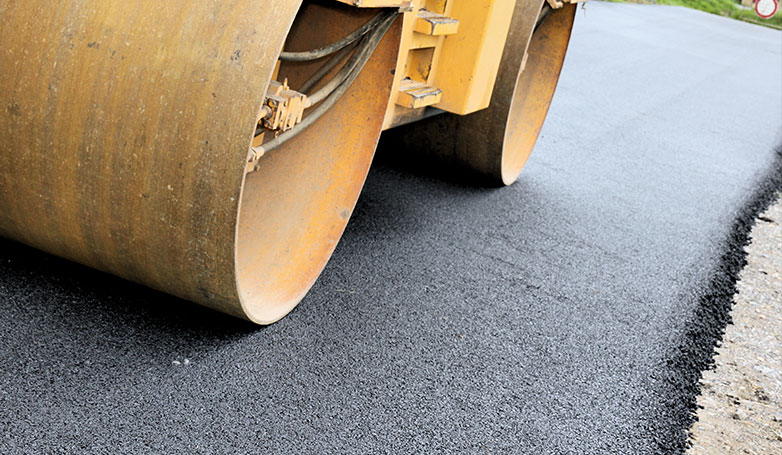
The quality of your asphalt pavement would also improve with recycled material. The additional mineral fillers would produce stronger resistance to cracking, and so would the organic fibers in the recycled materials.
But like every other good thing, it has some disadvantages too. Reclaimed asphalt is environmentally friendly, and you can use it for paving projects. However, when it comes down to a choice between reclaimed asphalt pavement and a new asphalt one, you have to consider some important factors.
Below is a comparison of reclaimed asphalt pavement and new asphalt.
Recycled Asphalt Cost
Recycled asphalt offers an economical alternative to new asphalt, with costs ranging from $10 to $20 per ton. The installation cost varies between $1.50 to $2.50 per square foot, depending on factors like the project’s complexity and geographical location. While these figures provide a basic estimate, the total cost for a typical project can differ significantly. Factors influencing the overall expense include project size, site accessibility, and local labor rates, making it essential to consider these aspects for a more accurate budget assessment.
| Item | Cost |
|---|---|
| Recycled Asphalt Cost (per ton) | $10 – $20 |
| Installation Cost (per square foot) | $1.50 – $2.50 |
| Total Cost for Typical Project | Varies based on project size and complexity |
Reclaimed Asphalt Pavement VS. New Asphalt
When deciding between reclaimed asphalt pavement and new asphalt for your project, it’s important to understand the differences and unique benefits each option offers. Here’s a detailed comparison to help guide your decision:
Cost and Environmental Impact: Reclaimed Asphalt
Reclaimed asphalt stands out as a cost-effective and environmentally friendly choice. It significantly reduces the expenses associated with mining and production that are typical of new asphalt. Additionally, its production process demands less labor, making it a more budget-friendly option. In terms of environmental benefits, using reclaimed asphalt minimizes the extraction of natural resources, aligning with sustainable practices.
Aesthetics and Suitability
Aesthetically, reclaimed asphalt often holds an advantage. Many find its appearance, which closely resembles traditional surfaces, visually appealing. This factor, combined with its functionality, makes reclaimed asphalt a practical choice for those seeking both utility and beauty in their pavement.
Permeability and Climate Considerations

Another notable benefit of reclaimed asphalt is its permeability. It allows water to pass through more effectively than new asphalt, making it an ideal option for areas with wetter climates. This permeability can lead to better water management and reduced surface water accumulation.
Quality and Appearance: New Asphalt
On the other hand, new asphalt typically leads in terms of quality. It offers a uniform composition, ensuring consistent performance and durability. The recycling process can sometimes affect the material’s properties, and the outcome may vary depending on the recycling facility’s standards.
Personal Preferences in Appearance
The choice between reclaimed and new asphalt may also come down to personal aesthetic preference. While some may not favor the gravelly appearance of reclaimed asphalt, others might prefer the smooth, dark look of new asphalt. This difference in appearance can be a deciding factor for individuals prioritizing specific aesthetic qualities in their pavement.
Concrete Recycling: A Sustainable Solution
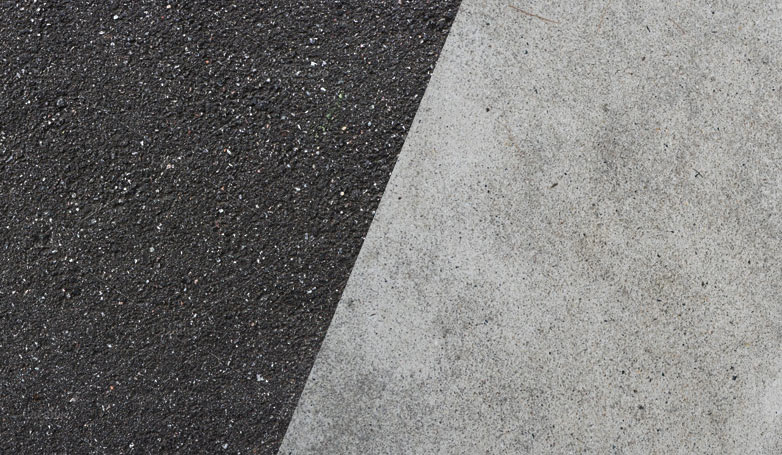
Concrete, a major component of the solid waste stream, has been transformed by the innovative concept of concrete recycling. This environmentally conscious approach repurposes concrete rubble as aggregates, offering a viable alternative to traditional disposal methods.
Concrete recycling emerges as a strong contender next to recycled asphalt, particularly appealing to homeowners and builders for various construction projects. If asphalt isn’t the preferred choice, recycled concrete offers a practical alternative for pavements and other solid surfaces.
Interestingly, these recycled aggregates typically exhibit different properties compared to new aggregates. They often have lower crushing strength, specific gravity, and impact resistance, but higher absorption value, which can influence their use in certain applications.
The Driving Factors Behind Concrete Recycling
The move towards recycling concrete is driven by several compelling reasons:
- Daily demolition activities result in tons of waste concrete. While demolishing old and unsafe structures is necessary, the resulting concrete waste poses a significant disposal challenge.
- The need to remove and repurpose useless concrete from roads, buildings, and other structures.
- Earthquakes and natural disasters often leave behind a trail of destruction, including damaged concrete structures.
- Concrete waste also arises from cylinder testing, concrete cube tests, and other destructive testing methods in construction.
Like asphalt recycling, concrete recycling represents a positive shift in the construction industry, bringing several unique benefits to the table. Let’s explore these benefits and understand why concrete recycling is becoming an increasingly popular choice.
Benefits of Concrete Recycling
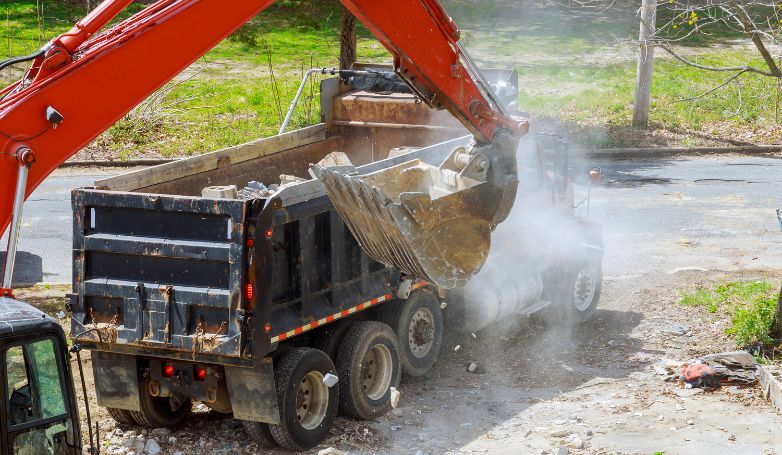
Concrete recycling is a far better option than letting it go to a landfill or merely dumping it. Like reclaimed asphalt, recycled concrete benefits the economy and environment in multiple ways, including:
- Freeing up a lot of landfill space that debris from concrete otherwise occupies
- You will find recycled a far more cost-friendly source of aggregate than the one newly mined
- It reduces tippage and the charges of freight relatively.
- Recycling concrete reduces the demand for gravel mining and hence, conserves natural resources.
- When you have recycled gravel available at convenient distances, you will not have to spend a lot of money on haulage. We can consider this as an economic and environmental advantage because high-grade aggregate for construction projects is usually available at greater distances. To acquire that, you have to go all-out in terms of longer haulage distances and costs.
- The recycled concrete is also a high-quality aggregate and enhances the strength of your construction. This results from the meticulous process of crushing, sorting, pre-sizing, screening, and eliminating contaminants from the mixture for the final product. Hence, you can rest assured of top-most quality even if it is recycled aggregate.
FAQs about Recycled Asphalt

When considering the use of recycled asphalt for your project, you may have several questions about its application, quality, and advantages. Here are some frequently asked questions about recycled asphalt to provide you with clearer insights:
How can you reuse asphalt?
Reusing asphalt involves collecting and processing old asphalt material from roads, driveways, and other surfaces. This recycled asphalt can be used in various ways, such as a base or subbase material for road construction, an aggregate in the production of new asphalt, or as a cost-effective and sturdy material for residential driveways and paths. The process typically includes milling, crushing, and screening to ensure the material meets specific quality standards.
Is recycled asphalt good?
Absolutely! Recycled asphalt is not only good but also an environmentally friendly and cost-effective alternative to new asphalt. It offers comparable durability and quality, making it suitable for a wide range of construction projects. By reusing existing asphalt, it reduces the need for new raw materials and minimizes waste in landfills. Additionally, the energy consumed in processing recycled asphalt is significantly lower than that required for producing new asphalt.
Is recycled asphalt better than gravel?
Recycled asphalt has several advantages over gravel. Firstly, it tends to bind together better than gravel, leading to a smoother, more stable surface that’s less prone to washouts and potholes. Secondly, recycled asphalt offers better durability and requires less maintenance compared to gravel. It’s also more eco-friendly, as it repurposes existing materials. However, the choice between recycled asphalt and gravel may depend on specific project needs, budget, and personal preferences.
Final Thoughts
Recycling asphalt, involving milling and additive integration, offers a sustainable path in construction. It’s economically and environmentally advantageous, ideal for those seeking cost-effective and durable pavement solutions. This method is a testament to blending ecological responsibility with practical construction needs, marking a significant shift towards greener practices in the industry.

